US naval drones have spent 60,000 hours at sea helping the Navy spy on and defeat malicious threats in Middle Eastern waters

The US Navy has turned to an arsenal of drones to help it patrol Middle Eastern waters.
These drones fall under Task Force 59, a first-of-its-kind initiative for the Navy.
Business Insider recently visited the task force's headquarters in Bahrain.
Inside a massive warehouse located at a US Navy base in Bahrain, a tiny island country in the Persian Gulf, there are nearly a dozen drones on display.
They come in different shapes, sizes, and capabilities. Some resemble conventional speedboats, while others look like they could have been plucked right from a science fiction movie. They are used for reconnaissance or to gather intelligence, and, when needed, they can be quite lethal.
These drones belong to a Navy task force that's working to merge unmanned systems and artificial intelligence with maritime operations across the Middle East. It's an increasingly important task as wars become more and more reliant on autonomous platforms.
Known as Task Force 59, this initiative is the first of its kind for the Navy. It is intended to give the US greater surveillance and deterrence options in this volatile region where American and coalition forces are finding themselves facing threats from multiple of adversaries.
Drones help "augment our traditional combatant force," said Capt. Colin Corridan, the Task Force 59 commodore. For commanders, this gives them "the option to take on greater operational risk while maintaining a tactical and strategic advantage." Put more simply, they don't necessarily have to put their personnel in danger to get the tough jobs done.
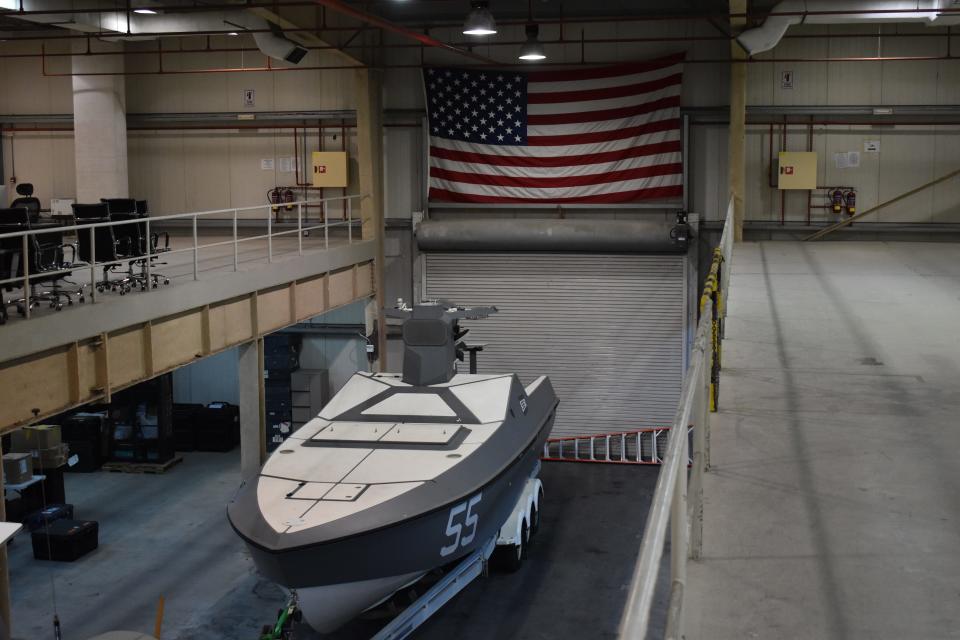
Task Force 59 was established in September 2021 by US Naval Forces Central Command, or NAVCENT, and is headquartered at Naval Support Activity Bahrain, a major US base in the Gulf state that hosts the Navy's Fifth Fleet.
Business Insider recently visited the installation, where, for over two and a half years, Task Force 59 has experimented with its diverse arsenal of drones and employed these systems in exercises and missions around Middle Eastern waters.
Since its inception, Task Force 59 has conducted at least 34 bilateral and multilateral exercises, and operated its drones at sea for more than 60,000 hours across the vast Middle Eastern waterways, Corridan said in emailed remarks to BI earlier this month.
A majority of Task Force 59's drones are unmanned surface vehicles, or USVs, meaning they function with some degree of autonomy at the water's surface.
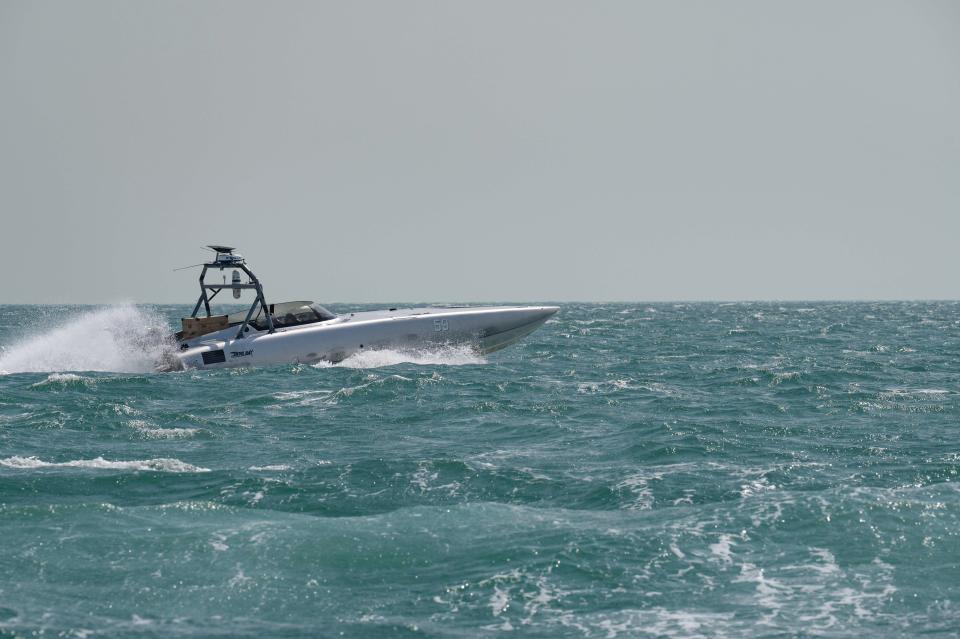
They vary in size — some are as short as 10 feet long while others push nearly 40 feet in length — but are similarly used for intelligence, surveillance, and reconnaissance, or ISR, purposes.
Beyond the USVs, Task Force 59 also operates unmanned underwater and aerial vehicles, UUVs and UAVs, respectively, giving it a wide range of capabilities and options above and below the surface to collect data.
Corridan said Task Force 59's drones are used daily in Fifth Fleet's area of operations, which spans a whopping 2.5 million square miles of water stretching from the Red Sea to the Indian Ocean. It also includes critical chokepoints, through which merchant vessels carrying various goods pass on their way to ports around the world.
"These unmanned systems offer tremendous opportunities for expanding regional maritime domain awareness and give us effective eyes on the water," Corridan said, adding that they "play an instrumental role in advancing our intelligence, surveillance and reconnaissance capabilities, while giving us increased lethality and enhanced operational readiness."
All drone activity is monitored and coordinated in the Robotics Operations Center, a small, unassuming room at the Task Force 59 headquarters. Full of monitors and little flags on desks, this space is essentially a command and control center, where the US and its foreign partners oversee various exercises and missions.
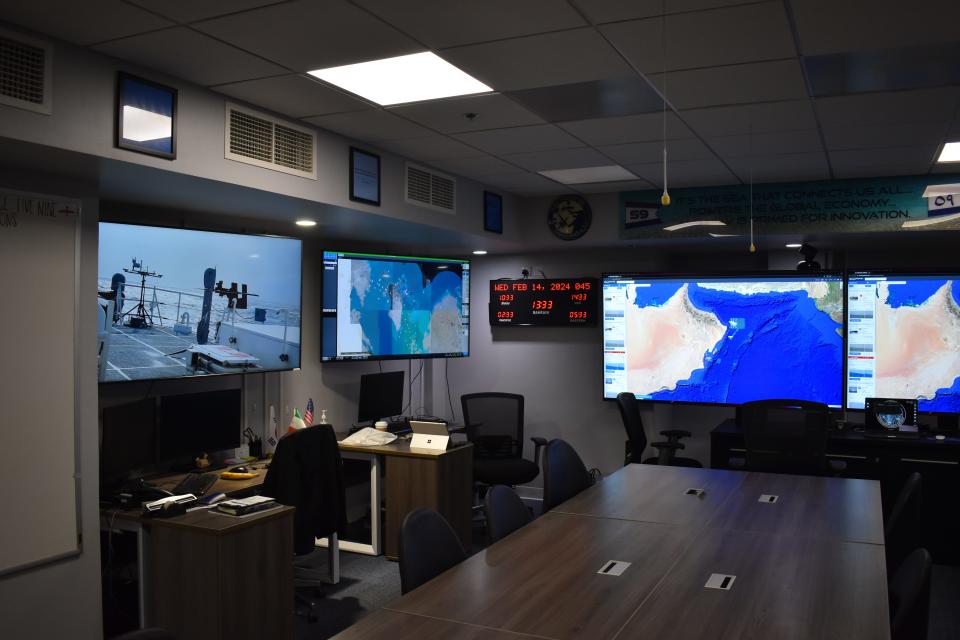
One such mission that took place in September saw the drones deployed to spy on Iranian warships, gunboats, and aircraft around the Strait of Hormuz, a strategic waterway between the Persian Gulf and the Gulf of Oman where Tehran's forces have routinely been accused of harassing commercial vessels and, at times, foreign military ships.
Vice Adm. Brad Cooper, then the NAVCENT commander, said at the time that the integration of drones into routine fleet operations allows the US to better monitor and patrol the region, while also increasing deterrence against bad actors.
Maritime awareness, a key focus of the September surveillance mission, has largely been the focus of Task Force 59 since its creation. But its work changed in October after a USV fired a live munition at a target simulating hostile forces during an exercise.
The engagement marked the first time that a USV had fired a lethal munition in the Middle East. Cooper hailed the moment as a "significant step forward" that brought the Navy's capabilities to the "next level." Instead of only being useful for maritime awareness, drones had proven that they could make a fleet more lethal, he said.
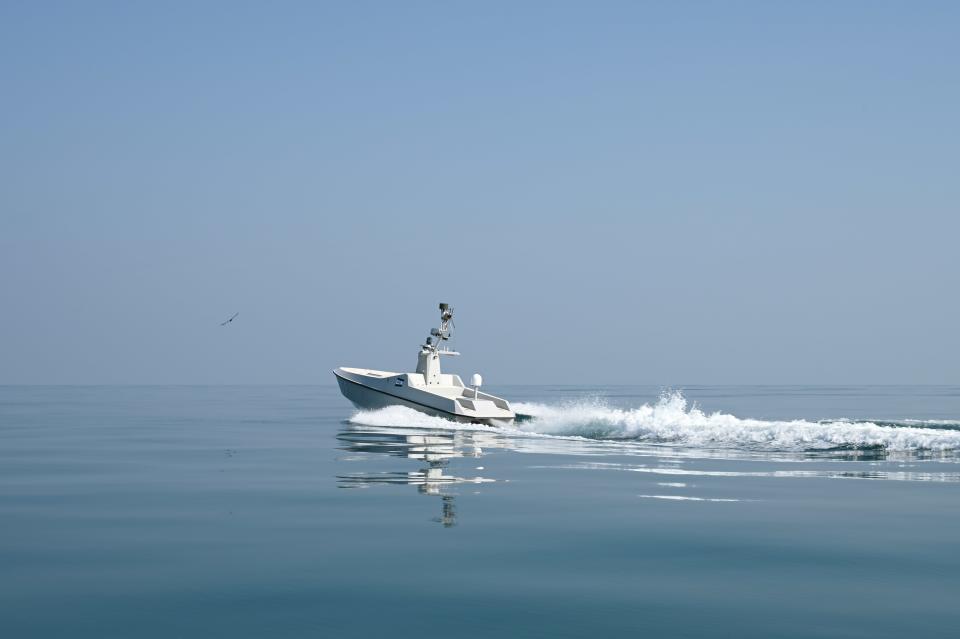
Developments like these emphasize the growing role that USVs are playing in conflict.
Ukraine, for example, lacks a proper navy. But for months, Kyiv has turned to a dynamic fleet of USVs packed with explosives to wreak havoc on Russia's Black Sea Fleet. It's an asymmetrical style of warfare that has proven to be quite difficult for Moscow to stop.
And thousands of miles away, Iran-backed Houthi rebels have attempted to use USVs to attack international shipping lanes off the coast of Yemen. But US forces tend to destroy these systems in preemptive strikes before they even have a chance to launch them into the water.
The trend extends beyond just the maritime domain, though, as militaries increasingly turn to unmanned systems and AI on and off the battlefield.
In the Ukraine war, this aspect of modern warfare has been underscored by the widespread employment of cheap commercial drones to conduct surveillance and high-cost attacks against the enemy. The deadly tactic is not new to this conflict, but it's one that the US military is wasting no time in training to defend against considering developments in this space.
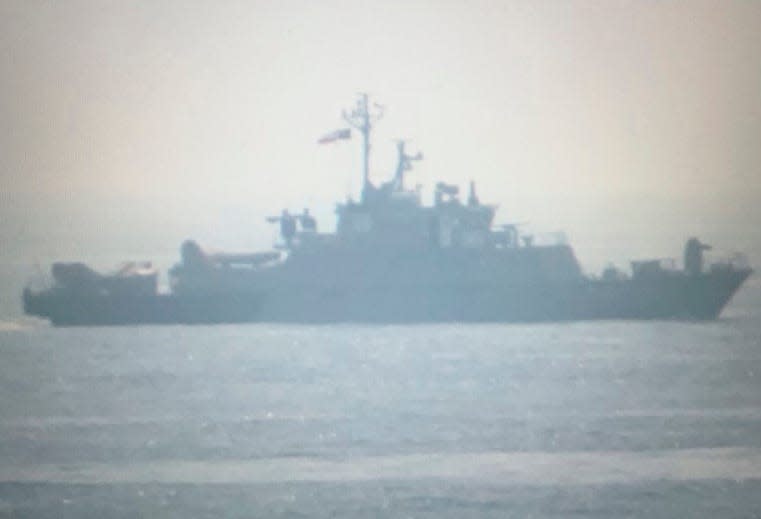
The rise of autonomous systems in war has also raised questions about ethical use and prompted discussion about what responsible development of military AI looks like. More than 50 countries, including the US and Ukraine, have endorsed a framework to address this issue.
For Task Force 59, while unmanned and AI systems will be used to monitor their environment and gather important data, Corridan said they will not act completely independent and a human will always remain in the loop to make critical decisions.
And as the threat environment continues to change in the Middle East, so do the needs of the task force.
"We are consistently learning," Corridan said. "It's something we're getting after to ensure we are bringing operational value to the warfighter."
Read the original article on Business Insider

